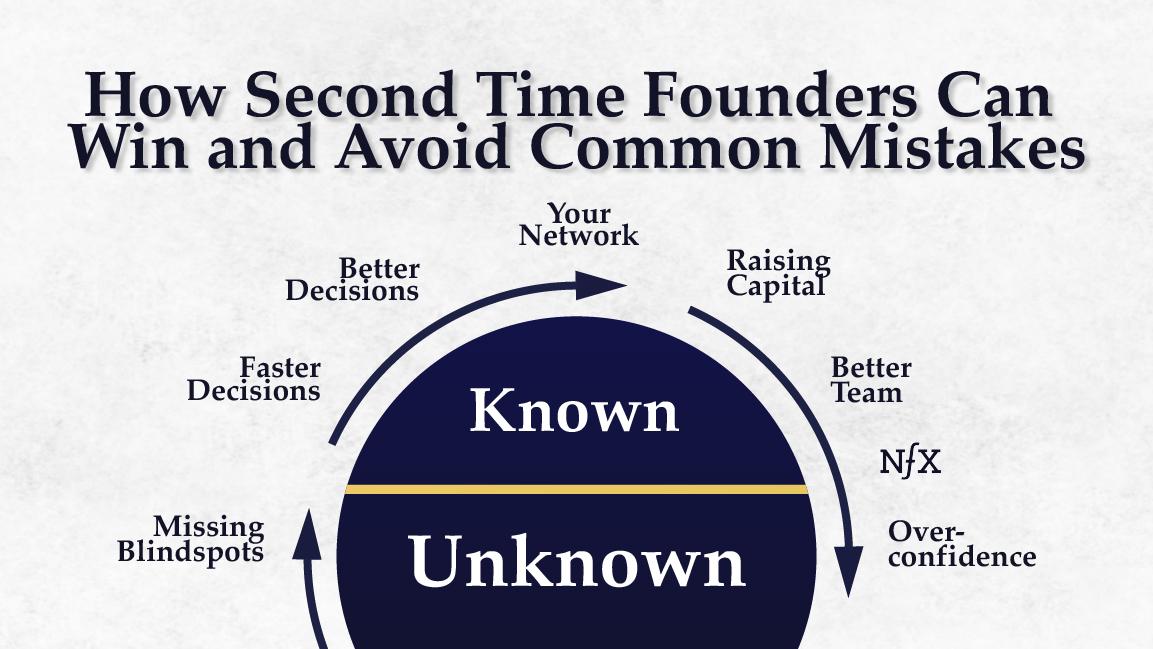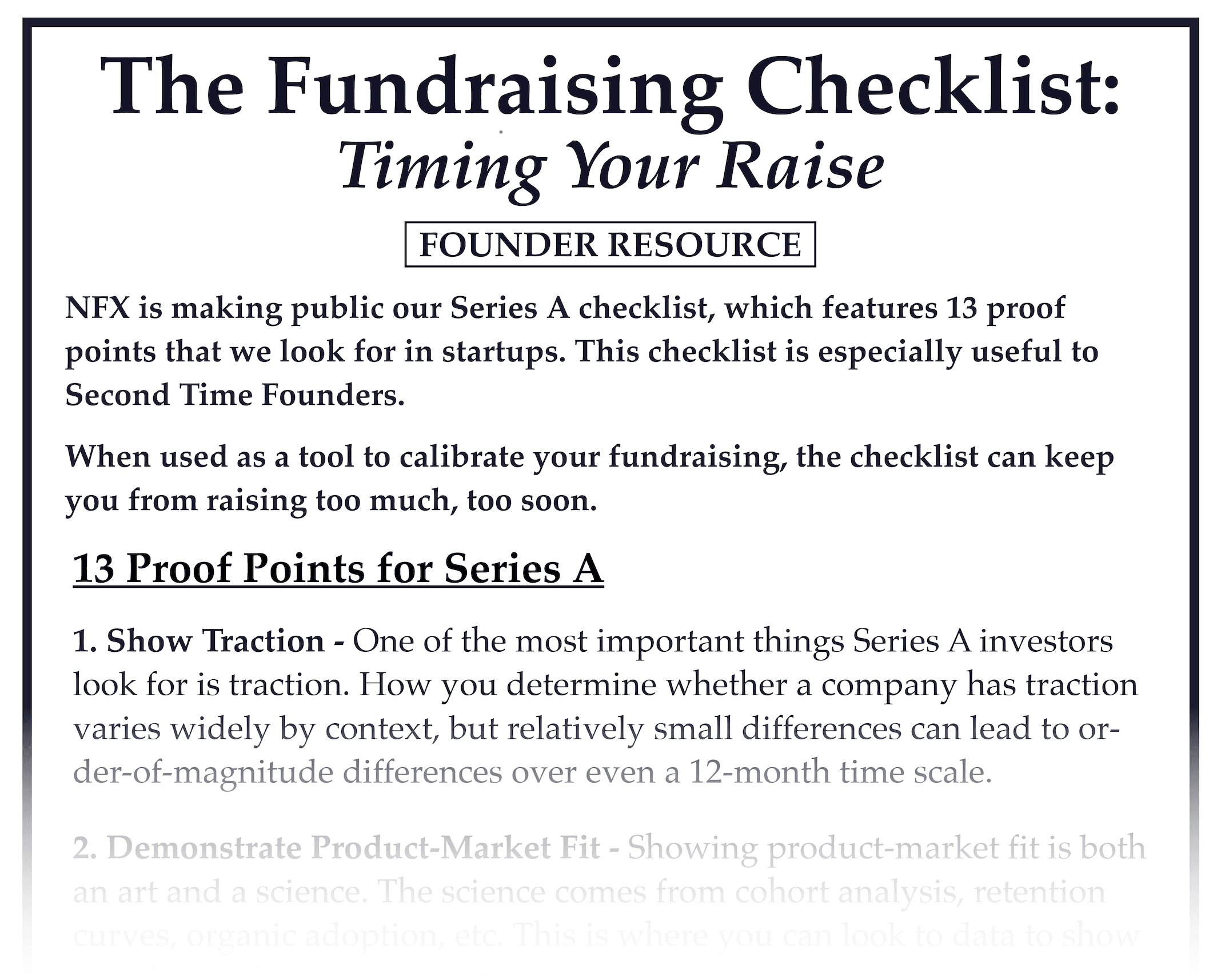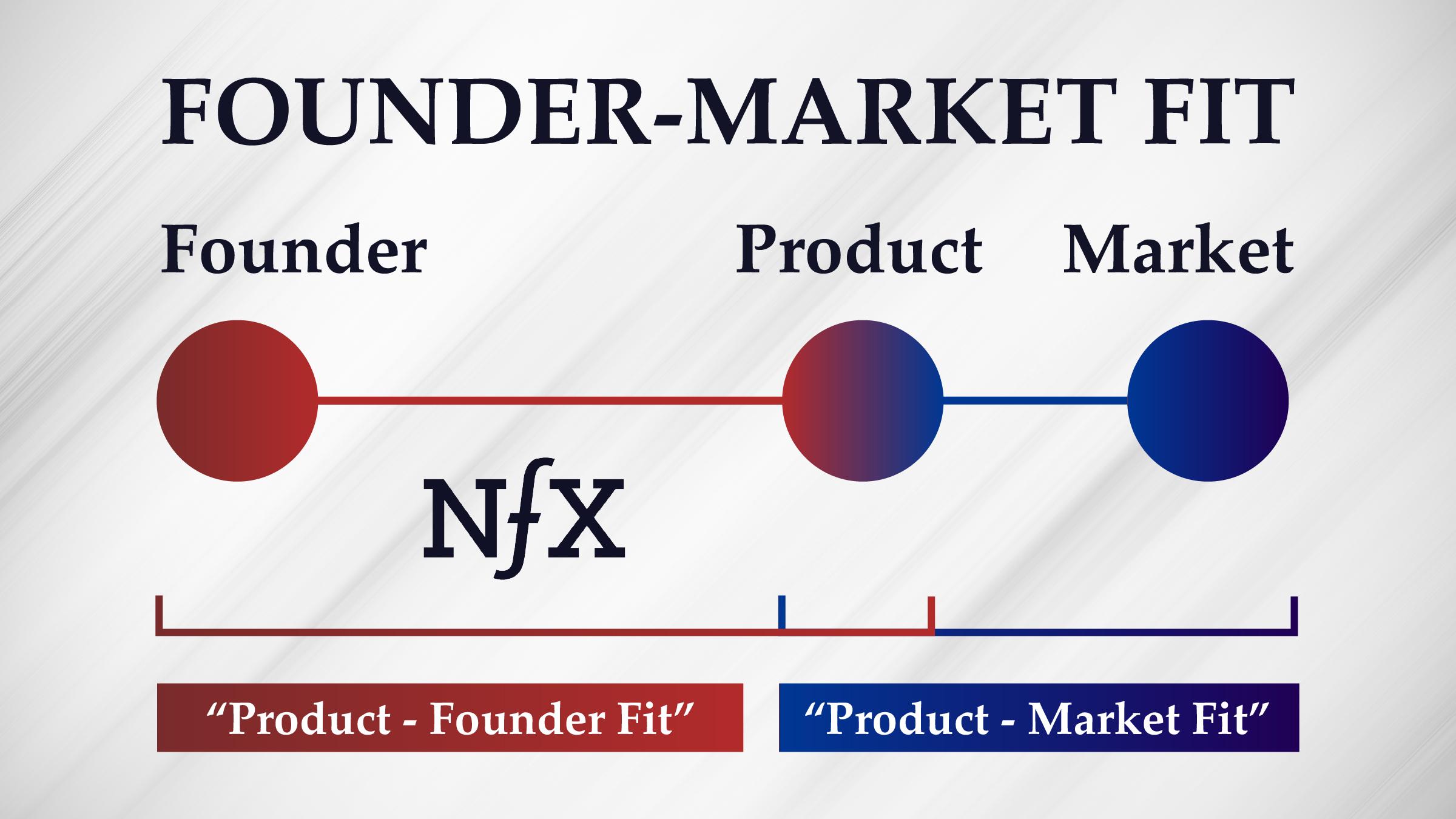

This is the first essay in the NFX Second Time Founders Manual, a collection of essays and resources for Founders starting their second, third, or subsequent company.
As a Second Time Founder, you have lessons and networks from your first experience that set you up for success.
For instance, in my second company, I knew who to bring onto my team. I could easily raise capital. I could make decisions twice as fast.
But with these advantages came disadvantages. I didn’t seek out as much advice as I still needed. I spent my own money for 2 years but didn’t operate with the same precision as when I was spending other people’s money. I was more hesitant to launch.
It turns out these are all common Second Time Founder behaviors. I wish I had known about them beforehand. So here are our compiled lists.
Potential Advantages of Second Time Founders
The 5 main advantages you have —that you need to leverage or you’re lost— are the following:
-
- Your network. As we’ve written about, the value of your network compounds over time. Having built that network running the last company, you get to benefit from it.
- You can raise capital more easily. Investors believe you will make fewer mistakes because you’ve already made many on someone else’s dime. Investors believe you will move faster, hire better, and shoot higher because you’re a veteran and have a network.
- You can hire a better team. You know more people, and you know who the top 5% of them are. Again, your network. They trust you to lead them for the same reasons the VCs trust you. It may make no sense, but it’s an advantage, so take it.
- You can make better decisions. Because you have more experience, and because you know more smart experienced people and can call them to ask for advice, you should be able to make better decisions. Again, your network.
- You can make faster decisions. You have less confusion because you’ve got a better sense of what excellence looks like. You have a sense of what the high benchmarks are.
Common Disadvantages
At the same time, there are mistakes that Second Time Founders tend to make.
1. Overconfidence
Second Time Founders tend to be overconfident. You might expect things to happen for you. You might not be willing to dig as deep as you did as a first time Founder. There’s a risk of feeling entitled and becoming superficial.
2. Not Asking “Stupid” Questions
VCs and employees will trust you more as a Second Time Founder, and the problem is you might believe it too much. It can become a trap for your ego. It can become a block to your pursuit of beginner’s mind and your own learning. As a Second Time Founder, the reason you want to go through a second time is to keep learning. It’s a vehicle for you to become the best person you can be. Keep asking questions and keep learning fast.
3. Surrounding Yourself with Sycophants
Another trap is to surround yourself with sycophants and “yes people” who are hoping you know all the answers. This is where it really gets ugly. When you believe too much in your own stuff, you spend too much money, and your board is pushing you to grow and go big before any of the fundamentals are in and before you have founder-market fit and product-market fit. This keeps you from being humble and from looking at the fundamentals. You must surround yourself with people who are going to tell you the truth. Don’t see challenges to your thinking as friction. See it as keeping you grounded and improving your chances of success.
4. Too Much Money, Too Soon
The first time you raised, you maybe raised a little from investors, and after some work, a little more. At each stage, you were capital constrained, and that helped you focus and make hard decisions. On your second time, if you come out the gate and raise $6 million, you might think that you’re already in year two. But you’re not. You don’t have the culture, the team, the cadence, or the processes in place. You skip to the end without building the proper foundations. The cliche to describe this is “Don’t get ahead of your skis.” It’s very common for Founders who raise too much money to have a brain shift that ruins their leadership and eventually their company. Don’t be that Founder.


5. Underestimating the Role of Luck
My bet is that luck was a larger percentage of your success last time than you want to admit. Because you think you were “right last time,” you might fail to pivot or iterate fast enough during the early stages of your startup. Admit how much luck was involved to bring you to this moment in your career. If you take a moment to look, you will likely notice it was a “cascade of miracles” to get you to this lucky place.
6. Getting Impatient
You pick up an idea that is mediocre because you are desperate to get back out there. You could only take so many jogs in Golden Gate Park or whatever you were doing, so you grab an idea that seems pretty good. Then you blow through half of your money on that idea simply because you were feeling itchy at home.
7. Misunderstanding “Impact”
With more confidence as a Second Time Founder, you might be willing to start a business only if you can see a straight line to demonstrating positive social impact and meaning, like global warming or recycling or education. The impact becomes the driving force rather than the product or the customer. Unfortunately, now you have two ways to fail — the business fails or you fail to make the impact. As a result, counterintuitively, the probability of making an impact decreases. Most great businesses come from focus on the product and customer. Stay focused primarily there. Build a great business to increase your impact.
8. Taking an Idea Without Founder-Market Fit
These are three common traps here. One is when you see a business opportunity that doesn’t really fit, but you go after it because it seems like a good idea and you could make a lot of money. Another is when someone else gives you the idea, and you do it because you’d like to work with that person. The third is that maybe you were superficially interested in the idea and a VC said they would fund you if you do it. In any of these three cases, the trap is a lack of authenticity. A year in you realize you’re not actually that interested in the idea because you just pursued it for the business opportunity or the relationship opportunity, or because the VC said they would fund you. In all these cases, you skipped the founder-market fit. It’s unlikely to work.


9. Status Anxiety
Many Second Time Founders get drawn into a business to gain respect from the people they respect. Essentially you jump back too soon or in the wrong place out of anxiety to get appreciation or kudos. Ben Casnocha has a great blog post about this condition. There are at least two main behaviors with this mental state: first, you won’t launch your product before it’s perfect because you don’t want to look like a fool. Second, you jump back in to please status players. For instance, if a VC comes to you and says, “If you do this business we’ll back you,” and you really respect that VC, you might do it. Then suddenly you’re trapped. You’ve raised $4 million, you’ve got a team of 12, you’re pursuing something you’re not really that interested in and you’re doing it for status reasons. That’s bad for everyone, particularly you.
10. Overspending
As Second Time Founders, your brains can be stuck where you were at the end of your last experience, when you had a lot of revenue. You were used to big budgets and spending a lot. It can be hard to reset and go back to spending $40,000 a month instead of spending millions per month. This can lead you to overspend and burn through your capital quickly, which puts pressure on your fundraising and on your cap table.
11. Building a Team Purely Out of Loyalty
Your VP of Marketing or VP Engineering might join your new startup to work with you. But they need to also have founder-market fit themselves. We see a lot of Second Time Founder teams dissolving and churning within a year due to not building with an eye toward sequential, organic additions with the right fit.
12. Over Indexing on Previous Pain
A lot of Second Time Founders over-index on their pains from the last company way before they know if they have product-market fit. For example, if you had a problem last time with the technology and you couldn’t raise money and almost went out of business, you might have PTSD and refuse to go through that again. So you might overbuild a product before you know if you have product-market fit. Be clear about your PTSD from the last time and stay rational about what you’re solving for now. Don’t fight the old ghosts.
13. Not Seeing Your Operational Blindspots
Don’t let your past successes become blinders. Each time you start a company it’s different. You’re starting down a different path, at a different time, in a different market, with different people. You’re going to learn new things and it’s going to require new skills. We don’t want to pick on Googlers, but we’ll use them as an example. Google culture rewards iterating slowly and overbuilding technology for massive scale. So you might imagine recent Google alums iterate too slowly and overbuild technology in their startups. Ex-Googlers might also not understand how to get traffic because for years at Google they could just put a little link somewhere and have 10 million people using it the next week. We all have operational blind spots and misaligned mental models created by wherever we were before.
14. Partnerships
Another mistake Second Timers make is doing a lot of biz dev deals because they can. You’re older and you know more people in higher places. Maybe you’re at dinner with someone or you’re up in Tahoe together, and someone says “Hey, wouldn’t it be cool if we partnered up on this together?” You can’t biz dev your way to success. Stay focused on product and customers.
Your previous experience will guide you on your journey as a Second Time Founder, but it can also lead you astray. You have superpowers, but you have to keep them in check by being patient and deliberate, by making decisions for the right reasons, surrounding yourself with the right people, and by continuing to ask questions and to grow.
Wisdom from Second Time Founders
Ideas are solutions to problems. An idea is the start of a deep exploration of the problems people have. This mindset is how you discover great ideas worth pursuing. The problem should be a top priority for your target audience. Choose a problem that enough people need solved so you can ensure that your business actually gets users/customers. I like to assess the frequency, urgency and pain of a problem. How often do people have to solve it? How urgently do they need to solve it when it comes up? And how painful is their current experience? The key to finding a good idea is to get excited about the problem. Love the problem(s) you are solving, not your initial idea or current solution in have in mind.
I learned that working with the wrong people will absolutely destroy a startup. This second time around, I used a series of many co-working weekends over the course of a year to work on common problems to judge (1) product-founder fit, (2) commitment, (3) strength fit between myself and the people that showed up consistently, (4) character. Ultimately, you need your values, work-ethic and priorities to align , as well as a balance of skills that compliment each other.
Finding a co-Founder is one area I paid extra attention to this time around – to understand what are the expectations on both sides both from responsibilities and desired outcome (i.e. what do you want to get out of this?). We did an exercise where each of us wrote a one-pager with their job description and also their best/worst case outcomes. The one rule was, you can’t see the other’s page before you share yours.
So many founders don’t realize what was lucky about their first time and they’ll be able to just do it again. Also, we tend to learn the wrong lessons from success or failure. My second startup is radically different from my first one, and I think it’s an advantage because there’s a tendency to over-extrapolate from what you did before, and industries change.
As a first-time founder, you’re constantly doubted and fielding rejection. Yet, as a second-time founder, people start to believe in you more and challenge you less, making it even more important to surround yourself with strong partners and advisors who bring diverse experiences and perspectives that push and challenge you, and your business, in new ways.
In one of my companies I raised an initial round of $8m which led to the notion that we could follow a multi-strategy approach and have a better chance of succeeding. In reality, instead of hedging our main strategy we ended up not executing any of the directions fast and focused enough. Having raised too much money got us to lose our focus – which took precious time to fix.
When starting Trulia, after the initial idea, the plan was based around how I could utilize some of the unique capabilities I had developed at my previous startup and at the same time try to eliminate the structural inhibitors to growth. Specifically, I had confidence as the growth person at lastminute.com, to scale the consumer audience and also navigate on how to partner with the industry to bring their inventory online. On the other hand, I was focused on building a business that was easier to scale (US vs Europe), higher margin (media gross margins vs travel commissions) and much more focused on a single vertical (residential real estate vs all things last minute). The combination of extending capabilities while eliminating barriers to growth from my previous work was hugely influential in formulating the plan.
If you would like to be considered for our invite-only group of Second Time Founders, where we plan to hold private forums and small-group discussions, complete this form.
As Founders ourselves, we respect your time. That’s why we built BriefLink, a new software tool that minimizes the upfront time of getting the VC meeting. Simply tell us about your company in 9 easy questions, and you’ll hear from us if it’s a fit.
